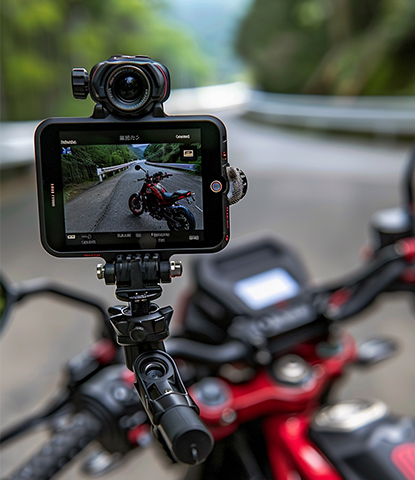

Time:2025-09-03 Views:1

Screws are seemingly small yet indispensable components of camera stands, playing a vital role in ensuring the structural integrity, stability, and functionality of the entire setup. These screws are specifically engineered to meet the unique requirements of camera stands, providing secure connections that can withstand the weight of cameras and various equipment while also allowing for adjustments and disassembly when needed.
The selection of materials for camera stand screws is of great significance. Stainless steel is a popular choice due to its excellent corrosion resistance, durability, and strength. In outdoor or humid environments, stainless - steel screws prevent rusting, ensuring that the camera stand remains reliable over time. Additionally, brass screws are sometimes used for their good anti - corrosive properties and relatively lower magnetic interference, which can be crucial in certain sensitive camera setups. The choice of material also depends on factors such as the weight of the camera and the environmental conditions in which the stand will be used.
Camera stand screws come in various types, each serving a specific purpose. Machine screws are commonly used for attaching components like camera plates, ball heads, or pan - tilt heads to the stand. They typically have a uniform thread and are used in combination with nuts or tapped holes. Self - tapping screws, on the other hand, are useful for directly securing parts to materials such as plastic or thin metal, eliminating the need for pre - drilled threaded holes. They cut their own threads as they are screwed in, providing a quick and convenient fastening solution.
The thread pitch and diameter of camera stand screws are carefully designed to balance strength and ease of adjustment. A finer thread pitch offers more precise adjustment and a stronger grip, making it suitable for components that require delicate positioning, such as a camera plate on a tripod head. Larger - diameter screws are used for heavier - duty applications, where more holding power is needed to support the weight of professional cameras and additional equipment like large lenses or lighting rigs.
In addition to the basic functions of fastening, some camera stand screws feature special designs. For example, some screws have anti - vibration features, such as serrated edges or nylon inserts, which prevent the screws from loosening due to vibrations during shooting. This is particularly important in scenarios like action photography or when the camera stand is placed on uneven surfaces. Overall, screws for camera stands may appear simple, but their proper selection and design are essential for maintaining the stability and performance of camera setups, ensuring that photographers and videographers can focus on capturing the perfect shot without worrying about equipment failures.
Read recommendations:
tripod ball head quick release plate custom